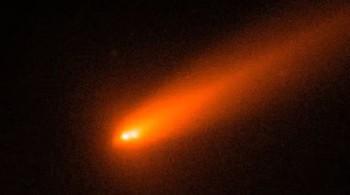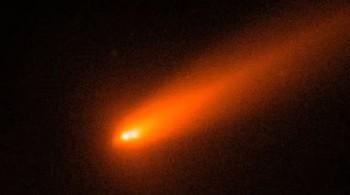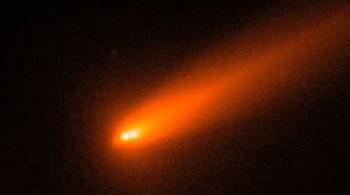
Comet C/2025 K1 (ATLAS) breaks into 3 after coming close to Sun
Comets have long been a source of fascination for astronomers and space enthusiasts alike. These icy bodies from the outer reaches of our solar system offer a glimpse into the formation and evolution of our cosmic neighborhood. Recently, a remarkable event has captured the attention of the scientific community: Comet C/2025 K1 (ATLAS) has broken into three pieces after passing too close to the Sun. This extraordinary occurrence was captured by astronomers using Italy’s Copernicus telescope, providing a unique opportunity to study the dynamics of cometary breakup.
The Comet C/2025 K1 (ATLAS) was first discovered in May 2025 by the Asteroid Terrestrial-impact Last Alert System (ATLAS) survey. Initially, it was thought to be a relatively ordinary comet, with a perihelion (closest approach to the Sun) scheduled for October 8, 2025. However, as the comet drew closer to the Sun, astronomers began to notice something unusual. The comet’s nucleus, which is the central, solid part of the comet, started to show signs of instability.
On October 8, Comet C/2025 K1 (ATLAS) made its closest approach to the Sun, passing within 1.3 astronomical units (AU) of our star. An astronomical unit is the average distance between the Earth and the Sun, approximately 149.6 million kilometers. As the comet approached the Sun, the intense heat and radiation caused the ices on its surface to vaporize, creating a bright coma (the cloud of gas and dust surrounding the comet) and tail.
After the comet’s perihelion passage, astronomers observed a dramatic change in its structure. The comet’s nucleus had broken into three distinct pieces, with two large chunks drifting approximately 2,000 kilometers apart. A smaller, third piece was visible to the left of the pair. This unexpected breakup was likely caused by the intense thermal stresses exerted on the comet’s nucleus as it passed close to the Sun.
The breakup of Comet C/2025 K1 (ATLAS) was captured in stunning detail by Italy’s Copernicus telescope. The images, which have been made available to the public, offer a unique glimpse into the dynamics of cometary fragmentation. By studying these images, astronomers can gain valuable insights into the internal structure and composition of comets, as well as the processes that govern their evolution.
The fragmentation of Comet C/2025 K1 (ATLAS) is not an isolated event. Comets are known to be fragile and prone to breakup, particularly when they approach the Sun. The intense heat and radiation can cause the ices on the comet’s surface to vaporize, leading to a buildup of pressure that can ultimately cause the comet to fragment.
The study of cometary breakup is essential for understanding the formation and evolution of our solar system. Comets are thought to be remnants from the early days of our solar system, and their composition and structure can provide valuable clues about the conditions under which our planets formed. By studying the fragmentation of comets like C/2025 K1 (ATLAS), astronomers can gain a deeper understanding of the processes that shaped our cosmic neighborhood.
In conclusion, the breakup of Comet C/2025 K1 (ATLAS) is a remarkable event that offers a unique opportunity to study the dynamics of cometary fragmentation. The stunning images captured by Italy’s Copernicus telescope provide a glimpse into the internal structure and composition of comets, and the processes that govern their evolution. As astronomers continue to study this event, they may uncover new insights into the formation and evolution of our solar system.
For more information and stunning images of Comet C/2025 K1 (ATLAS), visit: https://www.moneycontrol.com/science/comet-c-2025-k1-atlas-splits-into-three-after-sun-encounter-see-stunning-images-here-article-13675154.html/amp






